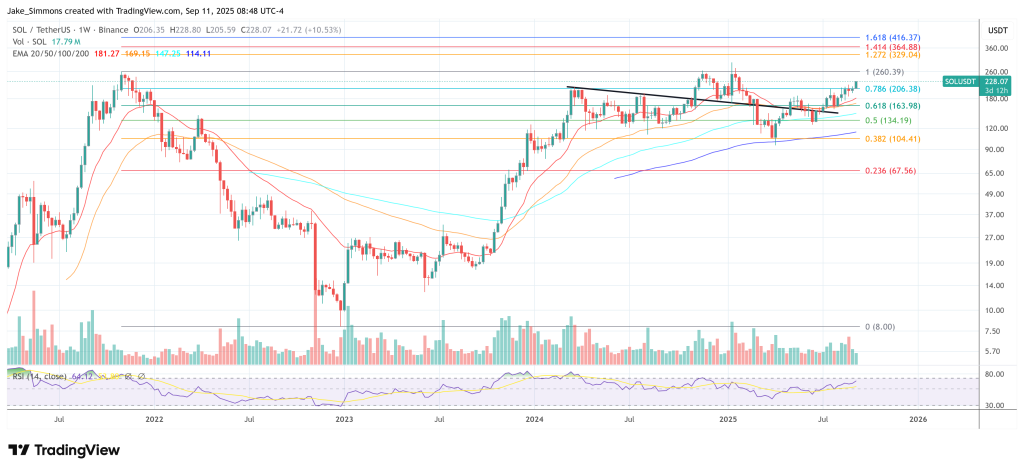Ah, Solana-land of blazing speeds, blockchain bravado, and now, the thrilling prospect of a native stablecoin saga! Helius Labs CEO Mert Mumtaz has stirred the cauldron of crypto chaos by suggesting a Solana-aligned stablecoin. Picture it: a digital currency whose reserve yield doesn’t just sit idly by but instead leaps into action, burning or buying back SOL like an overzealous pyromaniac at a bonfire party. “Warm up to the idea!” he mused, before quickly clarifying that perhaps it shouldn’t be enshrined in the protocol itself but rather left to Digital Asset Treasury companies (DATs). And with that, the Solana ecosystem was off to the races-trillions of dollars’ worth of potential, if we squint hard enough. 💸😏
Yield Leakage: The Villain of This Tale?
Mumtaz’s critique is sharp as a samurai sword: “Stablecoins are commodities,” he declared, pointing out the glaring issue of “yield leakage.” On Solana, one stablecoin allegedly captures all the yield and funnels it straight to Solana’s biggest competitor. Oh, the betrayal! It’s like inviting your neighbor to dinner only to discover they’ve been secretly funding your rival’s bakery. 😡🍞 Under the US GENIUS Act, stablecoins are locked in a fierce battle for market share, with issuers scrambling like contestants on a reality TV show to woo users. Mumtaz argues that Solana-centric stablecoins-or at least DATs-could fix this travesty, redirecting those funds back into the Solana ecosystem. After all, why let your competitors feast on your scraps? 🍰💸
But wait! Legal scholars raise their quills in protest. The GENIUS Act, signed in July, classifies “payment stablecoins” as neither securities nor commodities, placing them under the watchful eye of banking regulators. Mumtaz’s fiery rhetoric about “commodities” may be more metaphorical than legalistic. Still, the law’s economic implications are clear: stablecoin issuers get to keep the reserve income, and Mumtaz wants that income pointed squarely at Solana’s heart-er, wallet. 💼💰
Enter KASTcard, a company eager to take up the mantle. Their CEO boldly proclaimed that 101-103% of interest income from their upcoming stablecoin, USDK, would be used to buy back SOL. A foundation tied to their planned token issuance would handle the buybacks, with the extra 1-3% treated as marketing spend. “Genius compliant,” they say, winking at regulators while plotting their next move. KAST and its partner m^0 have already teased programmable, application-specific dollars, aiming to dominate global stablecoin payments. Could this be the dawn of a new era? Or just another flash in the pan? 🌟💳
The mechanics are simple enough: a native USD stablecoin generates yield (perhaps from T-bills), which a DAT structure then uses to buy SOL on the open market. Burn it, recycle it into ecosystem programs-it’s all part of the grand plan. Mumtaz even joked about a hypothetical stablecoin called “USDmanlet,” earning yield and pumping it back into the ecosystem. “Embed it, burn it, repeat,” he quipped, as if sketching plans for a perpetual motion machine. 🔥📈
The Stablecoin Wars Heat Up
Of course, Mumtaz’s jabs aren’t without targets. His critique of USDC’s economics and Coinbase’s Base L2 is as pointed as a freshly sharpened pencil. USDC reserves generate significant revenue for Coinbase, which incubated Base-an Ethereum Layer-2 that’s become a bustling hub for on-chain activity. While none of this is inherently nefarious, Solana purists see it as strategically suboptimal. Why let billions in Solana-settled stablecoin activity fund a rival’s empire? Mumtaz’s solution? Fix it through competition or collaboration-but fix it nonetheless. 🏰⚔️
Tushar Jain of Multicoin Capital chimed in with applause, praising Solana’s culture of adopting good ideas. He referenced Hyperliquid’s model of encouraging stablecoin issuers to buy HYPE with USDH interest-a strategy he believes could drive value back into ecosystems. Why should Circle hoard all the interest revenue from USDC on Solana? It’s a question that echoes through the corridors of crypto Twitter like a rallying cry. 📢💪
For now, this remains a proposal-a tantalizing what-if rather than a concrete reality. There’s no SIP or governance vote to enshrine such a mechanism, and Mumtaz himself leans toward a market-driven approach via DATs. Whether it’s competing issuers pledging buybacks, a canonical “ecosystem stable,” or a modular treasury program, the goal is clear: stop leaking yield, and point it at SOL. At press time, SOL traded at $228, leaving investors to wonder whether this bold vision will ignite a rally-or fizzle out like last year’s fireworks. 🎇📉

Read More
- DOT PREDICTION. DOT cryptocurrency
- Brent Oil Forecast
- GBP CNY PREDICTION
- SEI PREDICTION. SEI cryptocurrency
- Gold Rate Forecast
- SOL PREDICTION. SOL cryptocurrency
- LTC PREDICTION. LTC cryptocurrency
- XDC PREDICTION. XDC cryptocurrency
- USD KZT PREDICTION
- USD CLP PREDICTION
2025-09-12 04:16